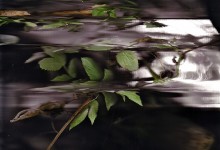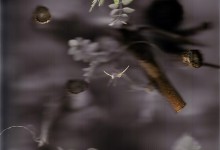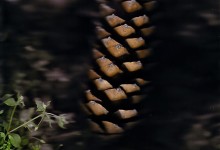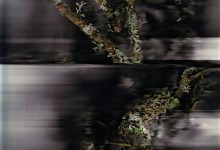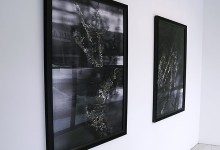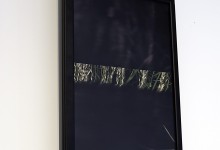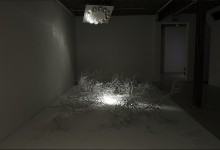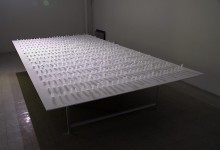Text by Jaynus O’Donnell
Patrick Beaulieu’s most recent project Révélations uses installation and digital prints to explore how artistic manipulation can create shifts in one’s expectations of the visual experience. Beaulieu clearly acknowledges his artistic presence in the work through mechanical and digital manipulation of the objects and images he presents. He becomes more than a passive observer and recorder of his physical world; the alteration of conventional photographs implants his voice and vision into the work. This approach directly addresses and contrasts artistic practices which seek to conceal the artist’s hand. His method diverges from those that attempt to present an uninterrupted and uncontaminated record, such as some documentary and straight photography. In using these stylized techniques, Beaulieu makes a palpable proclamation regarding the subjective and flexible condition of images.
In Révélations, images of trees, moss, leaves and other natural objects are presented in strict colour schemes of muted grays, browns and greens. Though these colours are familiar components of the natural world that we experience in day-to-day life and in photographs of nature, the subdued and dulled palette alludes to a dark, less lively depiction of nature. Idealistic notions of bountiful and vibrant landscapes are disrupted by the sinister appearance of these plant specimens. Along with the muted shades, the images are subject to digital fragmentation and blurring. These latter two techniques function together to create disconnections between the viewer and the natural world. The landscapes are rendered into dream-like settings with sparsely recognizable elements, highlighted only by their literal clarity in a scene of motion and textured abstraction. One part may be the only in-focus area or the image may be cropped beyond recognition of the whole.
These interventions make natural objects seem vaguely unfamiliar, thus disrupting typical expectations of one’s surrounding world. One is left wondering what the artist is trying to show us or what he is trying to hide. But through the blur and distortion lucid areas emerge and grasp our attention. Viewing the digital images feels like glancing at passing landscapes, driving past at high speeds or looking through textured glass. What has been missed in these brief and distorted glances? And though the images are based in temporal settings due to the literal movement in the images, there is also a past and future implied, piquing the audiences’ curiosity and begging them to move beyond the frame of the image.


